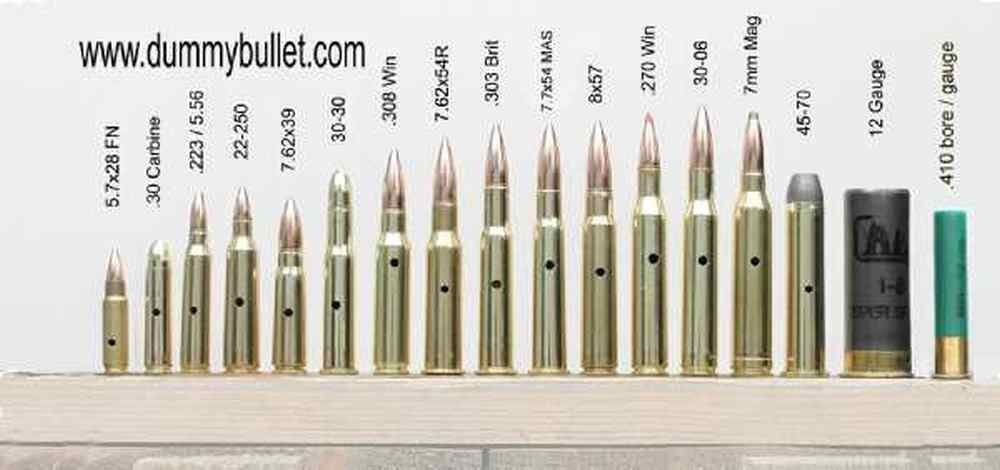“Revolutionizing firepower with cutting-edge materials.”
Nanotechnology in Bullet Design
In recent years, the field of ammunition design has seen significant advancements with the integration of nanotechnology. This innovative approach has revolutionized the way rifle ammunition is manufactured, resulting in improved performance and efficiency. Nanotechnology involves the manipulation of materials at the atomic and molecular level, allowing for the creation of new materials with enhanced properties.
One of the key benefits of using nanotechnology in bullet design is the ability to create materials that are stronger and lighter than traditional metals. By incorporating nanoparticles into the composition of the bullet, manufacturers can increase the hardness and durability of the projectile while reducing its weight. This results in ammunition that is more accurate and has a higher muzzle velocity, making it ideal for long-range shooting.
Furthermore, nanotechnology allows for the development of self-healing materials that can repair themselves when damaged. This is particularly useful in rifle ammunition, where the projectile is subjected to high levels of stress and impact. By using nanomaterials that can regenerate and repair themselves, manufacturers can create bullets that have a longer lifespan and are less prone to deformation or fragmentation upon impact.
Another advantage of nanotechnology in bullet design is the ability to tailor the properties of the material to meet specific performance requirements. By manipulating the size and shape of nanoparticles, manufacturers can fine-tune the ballistic characteristics of the bullet, such as its penetration depth, expansion rate, and fragmentation pattern. This level of customization allows for the creation of ammunition that is optimized for different types of shooting scenarios, whether it be hunting, target shooting, or military applications.
In addition to improving the performance of rifle ammunition, nanotechnology also offers environmental benefits. By using nanomaterials that are biodegradable or recyclable, manufacturers can reduce the environmental impact of ammunition production and disposal. This is particularly important in light of growing concerns about the sustainability of traditional ammunition manufacturing processes.
Overall, the integration of nanotechnology in bullet design represents a significant leap forward in the field of ammunition technology. By harnessing the unique properties of nanomaterials, manufacturers can create bullets that are stronger, lighter, more durable, and more environmentally friendly than ever before. As the demand for high-performance ammunition continues to grow, nanotechnology will play an increasingly important role in shaping the future of rifle ammunition.
In conclusion, the future of rifle ammunition lies in the innovative use of nanotechnology. By leveraging the unique properties of nanomaterials, manufacturers can create bullets that are stronger, lighter, and more durable than traditional ammunition. With the ability to customize the properties of the material to meet specific performance requirements, nanotechnology offers a level of precision and control that was previously unattainable. As the field of ammunition design continues to evolve, nanotechnology will undoubtedly play a central role in shaping the next generation of rifle ammunition.
Self-healing Materials for Bullet Casings
In the world of firearms and ammunition, innovation is key to staying ahead of the competition. One area that has seen significant advancements in recent years is the development of self-healing materials for bullet casings. These materials have the potential to revolutionize the way ammunition is manufactured and used, offering a range of benefits that traditional materials simply cannot match.

Self-healing materials are designed to repair themselves when damaged, making them ideal for use in high-stress applications such as rifle ammunition. By incorporating these materials into bullet casings, manufacturers can create ammunition that is more durable, reliable, and long-lasting than ever before.
One of the key advantages of self-healing materials is their ability to repair minor damage on their own. This means that even if a bullet casing is scratched or dented during use, it will be able to repair itself and continue to function as intended. This can help to extend the lifespan of the ammunition and reduce the need for frequent replacements, saving both time and money for shooters.
In addition to their self-repair capabilities, self-healing materials are also highly resistant to wear and tear. This means that bullet casings made from these materials are less likely to degrade over time, even with repeated use. This can help to improve the overall performance and reliability of the ammunition, ensuring that shooters can rely on their equipment when it matters most.
Furthermore, self-healing materials are often lighter and more flexible than traditional materials, making them easier to work with during the manufacturing process. This can help to streamline production and reduce costs, making self-healing materials an attractive option for ammunition manufacturers looking to improve efficiency and competitiveness.
Overall, the development of self-healing materials for bullet casings represents a significant step forward in the world of rifle ammunition. These materials offer a range of benefits that traditional materials simply cannot match, from self-repair capabilities to improved durability and reliability. By incorporating self-healing materials into their products, manufacturers can create ammunition that is more advanced, efficient, and cost-effective than ever before.
As the demand for high-performance ammunition continues to grow, it is clear that self-healing materials will play a key role in shaping the future of rifle ammunition. With their unique combination of durability, reliability, and efficiency, these materials have the potential to revolutionize the way ammunition is manufactured and used, offering shooters a new level of performance and peace of mind.
Biodegradable and Eco-friendly Bullet Components
In recent years, there has been a growing interest in developing innovative materials for rifle ammunition that are not only effective in performance but also environmentally friendly. One of the key areas of focus has been on creating biodegradable and eco-friendly bullet components that can help reduce the impact of shooting sports on the environment.
Traditional ammunition components, such as lead bullets and plastic casings, can have a significant negative impact on the environment. Lead is a toxic metal that can contaminate soil and water sources, posing a threat to wildlife and human health. Plastic casings, on the other hand, can take hundreds of years to decompose, contributing to the growing problem of plastic pollution.
To address these environmental concerns, researchers and manufacturers have been exploring alternative materials for bullet components. One promising development has been the use of biodegradable materials, such as bio-based polymers, in the production of bullets and casings. These materials are designed to break down naturally over time, reducing the long-term environmental impact of shooting activities.
Bio-based polymers are derived from renewable resources, such as plant-based sources like corn or sugarcane. These materials offer a sustainable alternative to traditional plastics, which are made from non-renewable fossil fuels. By using bio-based polymers in bullet components, manufacturers can reduce their reliance on finite resources and lower their carbon footprint.
In addition to being biodegradable, bio-based polymers can also offer performance benefits for rifle ammunition. These materials can be engineered to have specific properties, such as high strength and durability, making them suitable for use in high-velocity bullets. By leveraging the unique characteristics of bio-based polymers, manufacturers can create ammunition that is both effective in performance and environmentally friendly.
Another innovative approach to creating eco-friendly bullet components is the use of recycled materials. By repurposing waste materials, such as recycled metals or plastics, manufacturers can reduce the environmental impact of producing ammunition. Recycled materials can be used to create casings, bullets, and other components, helping to divert waste from landfills and reduce the need for virgin resources.
In addition to using biodegradable and recycled materials, manufacturers are also exploring other eco-friendly innovations for rifle ammunition. For example, some companies are developing lead-free bullets that are designed to minimize the risk of lead contamination in the environment. These bullets are made from alternative materials, such as copper or steel, that are non-toxic and safe for the environment.
Overall, the development of biodegradable and eco-friendly bullet components represents a significant step forward in the quest for sustainable shooting sports. By using innovative materials and technologies, manufacturers can create ammunition that is effective in performance, safe for the environment, and socially responsible. As the demand for eco-friendly products continues to grow, it is likely that we will see more advancements in this area in the future. By embracing these innovations, shooters can enjoy their sport while also protecting the planet for future generations.
3D Printing of Customized Ammunition
In recent years, the world of rifle ammunition has seen a significant shift towards innovation and customization. One of the most exciting developments in this field is the use of 3D printing technology to create customized ammunition. This cutting-edge approach allows for the production of ammunition that is tailored to the specific needs and preferences of individual shooters.
3D printing technology has revolutionized many industries, and the world of firearms is no exception. By using specialized 3D printers, manufacturers can create ammunition with precise specifications, including caliber, weight, and design. This level of customization allows shooters to optimize their performance and accuracy, resulting in a more satisfying shooting experience.
One of the key advantages of 3D printing customized ammunition is the ability to create unique designs that are not possible with traditional manufacturing methods. For example, shooters can experiment with different shapes and materials to achieve the desired performance characteristics. This level of flexibility opens up a world of possibilities for shooters looking to push the boundaries of what is possible with their rifles.
In addition to customization, 3D printing also offers significant cost savings compared to traditional manufacturing methods. By eliminating the need for expensive tooling and molds, manufacturers can produce small batches of customized ammunition at a fraction of the cost. This makes it easier for shooters to experiment with different designs and configurations without breaking the bank.
Another benefit of 3D printing customized ammunition is the ability to quickly iterate and refine designs. With traditional manufacturing methods, making changes to a design can be time-consuming and costly. However, with 3D printing, manufacturers can easily make adjustments and test new prototypes in a matter of hours. This rapid prototyping process allows for faster innovation and development of new ammunition designs.
Despite these advantages, there are still some challenges to overcome when it comes to 3D printing customized ammunition. One of the main concerns is ensuring the quality and consistency of the finished product. Because 3D printing relies on layer-by-layer deposition of material, there is a risk of imperfections and inconsistencies in the final product. Manufacturers must carefully monitor the printing process and perform rigorous quality control checks to ensure that each round meets the required specifications.
Another challenge is the limited availability of specialized 3D printing equipment and materials. While 3D printing technology has become more accessible in recent years, not all manufacturers have the resources or expertise to implement this technology in their production processes. As a result, the adoption of 3D printing for customized ammunition is still relatively limited.
Despite these challenges, the future of rifle ammunition looks bright with the continued development of 3D printing technology. As manufacturers continue to refine their processes and improve the quality of 3D printed ammunition, shooters can expect to see a wider range of customized options available on the market. Whether you are a competitive shooter looking to gain an edge or a hobbyist looking to experiment with new designs, 3D printing offers an exciting opportunity to explore the possibilities of customized ammunition.
Smart Materials for Enhanced Ballistic Performance
In the world of firearms and ammunition, innovation is key to staying ahead of the competition. One area where significant advancements have been made in recent years is in the development of smart materials for rifle ammunition. These materials are designed to enhance ballistic performance, providing shooters with more accurate and reliable ammunition for their firearms.
One of the most exciting developments in smart materials for rifle ammunition is the use of polymer-cased cartridges. Traditional brass casings have long been the standard in ammunition production, but polymer casings offer a number of advantages over their metal counterparts. Polymer casings are lighter and more durable than brass, making them ideal for use in high-performance ammunition. Additionally, polymer casings are less prone to corrosion and can be manufactured at a lower cost, making them an attractive option for both manufacturers and consumers.
Another innovative material that is being used in rifle ammunition is tungsten. Tungsten is a dense metal that is ideal for use in armor-piercing ammunition. By incorporating tungsten into the core of a bullet, manufacturers can create ammunition that is capable of penetrating even the toughest armor. Tungsten-core bullets are also more stable in flight, making them more accurate over long distances. This makes them an excellent choice for military and law enforcement applications where precision and stopping power are essential.
In addition to polymer casings and tungsten cores, smart materials are also being used to enhance the performance of rifle ammunition in other ways. For example, some manufacturers are incorporating advanced polymers into the design of bullets to improve their aerodynamics. By reducing drag and stabilizing the bullet in flight, these polymers can help to increase accuracy and range. Other companies are experimenting with the use of composite materials in bullet construction, creating ammunition that is lighter and more powerful than traditional lead-core bullets.
One of the key benefits of using smart materials in rifle ammunition is the ability to tailor the performance of the ammunition to specific applications. By carefully selecting the materials used in the construction of a bullet, manufacturers can create ammunition that is optimized for a particular type of shooting. For example, ammunition designed for long-range shooting may incorporate materials that improve stability and accuracy, while ammunition designed for hunting may focus on maximizing stopping power and expansion upon impact.
As technology continues to advance, we can expect to see even more innovative materials being used in the production of rifle ammunition. From advanced polymers to exotic metals, the possibilities for enhancing ballistic performance are virtually limitless. By incorporating these smart materials into their ammunition, manufacturers can create products that are more accurate, more powerful, and more reliable than ever before.
In conclusion, smart materials are revolutionizing the world of rifle ammunition. By using advanced polymers, tungsten cores, and other innovative materials, manufacturers are able to create ammunition that is more accurate, more powerful, and more reliable than ever before. Whether you are a competitive shooter, a hunter, or a member of the military or law enforcement, smart materials are shaping the future of rifle ammunition and ensuring that shooters have access to the best possible ammunition for their firearms.





